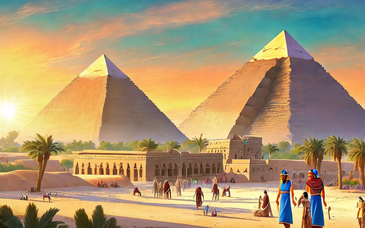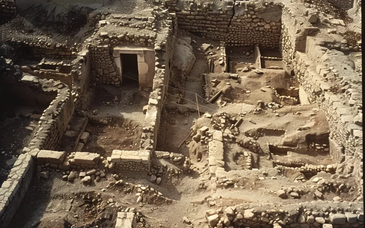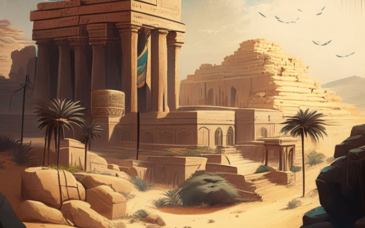Excavations continue at Khirbet el-Maqatir in Israel, the site some archaeologist associate with the Biblical city of Ai. The city of Ai is mentioned in Joshua 7-8 and was supposedly conquered by Israel around 1406 B.C. For some time Archaeologist Brian Peterson, of Lee University has claimed this site was indeed the city of Ai, but his findings did not convince everyone. The primary area of concern was Peterson’s dating of the site. Until the recent discoveries the site was being dated by the pottery being recovered. This is a common practice in archaeology, but it does have its drawbacks. Fortunately for Peterson, his theory no longer needs to reply on pottery alone.
Now Joshua sent men from Jericho to Ai, which is near Beth Aven to the east of Bethel, and told them, “Go up and spy out the region.” So the men went up and spied out Ai. When they returned to Joshua, they said, “Not all the army will have to go up against Ai. Send two or three thousand men to take it and do not weary the whole army, for only a few people live there.” So about three thousand went up; but they were routed by the men of Ai, 5 who killed about thirty-six of them. They chased the Israelites from the city gate as far as the stone quarries and struck them down on the slopes. At this the hearts of the people melted in fear and became like water. Joshua 7:2-5

During the 2013 excavation season a tiny Egyptian Scarab was recovered. Egyptians revered the dung beetle because of what they saw as an association with the sun god. The dung beetle encases its eggs in a ball of dung (manure) and uses its legs to roll the ball from place to place. The Egyptians associated this action with the movement of the sun across the sky, propelled by the sun god. For this reason the dung beetle was used in jewelry and official seals. Perhaps most important is that it is also possible to date these scarab’s much more accurately than pottery remains.
The scarab is tiny, measuring just ¾ of an inch. It is likely it would have been worn as a pendant or ring. Experts who have examined the scarab place it in the 15th century B.C. Peterson explains the scarab was likely created sometime between 1550 and 1450 B.C. and would have still been in use at the time of the destruction of Ai in 1406 B.C. This greatly reinforces Petersons claims that Khirbet el-Maqatir is the Biblical city of Ai.
By May 2014 the new excavation season at Ai had nearly reached the halfway point. Within the first half of the season archaeologist had recovered an amazing 210 coins, not from a single jar or hiding place, but from all across the site. In addition, archaeologist discovered a second scarab. As of this writing, details concerning this second scarab are not available but it has been sent to experts for cleaning and evaluation. Given these discoveries archaeologist hold high hopes for what the remainder of the 2014 season holds in store.
While tiny is size the scarab is considered extremely significant. It was, in fact, named the most important Biblical Archaeological discovery of 2103 by Christianity Today Magazine. This discovery has experts reevaluating the site as well as Peterson’s theories concerning Ai. As Peterson pointed out, some can claim his dating of the pottery is biased, but they cannot argue with the dating of the scarab.
This is also a good example of how the field of Bible Archaeology really works. Most people look and hope for the large discoveries, palaces, boats, and the like. These are indeed fascinating, but more often the important discoveries involve small less glamorous discoveries such as this scarab. For a time the excavators did not even realize the significance of the tiny artifact they had discovered. Fascinating that an image of a dung beetle crafted some 3,500 years ago can be so significant to today’s research.
Brian Peterson believes conservative Christians need to get involved in archaeology as a way to help prove the Bible historically. “We interpret the data from the fact that the Bible is inspired, and that it is history. The Bible can be validated based upon archaeology,” Peterson said. Peterson believes the excavations at Khirbet el-Maqatir will continue for an additional eight to ten years.






